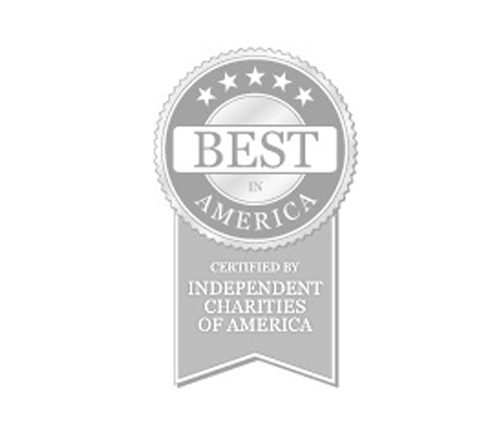Adoptive parents and guardians should not simply be viewed as consumers, but instead valued for their significant leaders in identifying gaps, spreading the work, and organizing as peers for other parents in both the pre- and post-
permanency process. Vermont and Utah are examples of states where adoptive parents/guardians were engaged while leaders listened early in the planning process. Thus, as Goldsmith (2010) argued, “Civic progress requires that those who advocate for new interventions build a community of engaged citizens to demand change in social-political systems” (p. 139).
As noted earlier, system change must be balanced among bureaucratic, professional, and community components, with a heavy focus on community and parents. Areas of opportunity identified in the 2013 NRCA focus groups were particularly focused on the need for meaningful parental engagement and dialogue. Generating such solutions, particularly when resources are short, can be supported by engaging parents from a new perspective.
Private and public leaders, whether in backbone organizations or provider organizations, need to be cognizant of the “curse of the professional” (Goldsmith, The Power of Social Innovatoin: How Civic Entrepreneurs Ignite Community Networks for Good, 2010, p. 136). Essentially, the curse of the professional is when providers and government believe that they know best. Unfortunately, this can inadvertently crowd out volunteer engagement even when such folks are invited to planning discussions. The biggest vulnerability to not fully engaging volunteers or beneficiaries is launching failed initiatives despite opportunities for others to participate. Confronting the challenges of the “curse of the professional” and political entrenchment is the active solicitation of parents for ideas and input.
When supported by a strong private-public partnership, a backbone organization, adoption competent services, and meaningful evaluation processes, parents can provide the “missing ingredient” on innovative solutions and supports for others. Ultimately these unique individual gifts and talents can have a substantial impact on the number of adoptive/guardianship families that provide stable and nurturing environments for their children.
Listening Tours and Focus Groups: Public and private leaders should actively solicit opportunities to have honest conversations with parents. The listening tour is an effective tool when initiating relationships with adoptive/guardianship parents. It not only captures important qualitative data that reveals unique connecting opportunities, but is, most importantly, a valuable and organic relationship-building conversation between adoptive/guardianship parents and policy-makers. Such listening tours should be orchestrated as private discussions that are unfiltered and unplugged.
As one NRCA focus group participant noted, adoptive parents/guardians are great at advocating for their children but are not very good at advocating for themselves. Ironically, parents become a resource to the system of ideas when they themselves have a crisis, challenge, or need.
This fascinating dynamic was noted in Central Florida where Salena Burden, a Post-Adoption Specialist at Devereux Florida, oversees the post-adoption services in three counties. Devereux is contracted by Community Based Care (CBC) of Central Florida to provide adoption support in Orange, Osceola and Seminole County. After being part of the state’s first foray into post-adoption supports, she noted that “we did not realize the magnitude of what was needed.” An early key driver was families self-referring without any constructive organizational marketing outreach process. Preventing dissolutions were the priority and the “first line of defense was a therapist” according to Burden. Over time, components related to adoption competency training were identified as a major need, and Burden’s employer at the time—Family Services of Metro Orlando—conducted the first adoption training for therapists in Orlando. The Florida Department of Children and Families also emphasized the importance of educating mental health counselors and developed a state-wide initiative for adoption competency training. Since then, over 100 professionals have been trained just in three counties in Central Florida and over 200 statewide.
Along with adoption competent therapists, parents particularly acknowledged the importance of therapeutic in-home supports—those components that would help prevent crises while supporting children in their own environment. Burden and Devereux Florida thought of leveraging the Medicaid systems of in-home supports. As the state’s largest children’s behavioral health provider, Devereux was experienced in Medicaid-funded Targeted Case Management (TCM). TCM is a holistic model that is Medicaid-funded at no cost to parents or the child welfare system. Children must have a mental health diagnosis to qualify for this program. Targeted case managers go into schools and homes, offering a community-based perspective. Parents, in turn, are actively engaged in advocating for mental health and emotional needs of their children. Service duration can be up to six months, thereby ensuring sustainable stability in both the home and school.
Planning Venues: A number of communities have councils and coordinating bodies that are typically made up of providers and human services leaders. One idea is adoption/guardianship planning “councils” that allow for building community-based strategies and policy changes. These councils can yield new resources if adoptive parents/guardians are given a consistent and meaningful platform to exchange ideas, understand the big picture, and create recommendations around policy and service delivery.
Illinois has been a leader in creating a venue focused on adoptions by parents and adoptees themselves. The Illinois Adoption Advisory Council (IAAC) has been functioning since 2000 with the purpose to advise the Director of the Illinois Department of Children and Family Services (DCFS) on matters involving or affecting the provision of adoption and guardianship services. The Council is also interested in working to preserve and expand funding for post-adoption and adoption preservation services, and enhancing the child welfare system’s ability to find permanent homes for teens and other children for whom permanency has not been arranged. The DCFS Director appoints council members. Members consist of adoptive parents and adoptees representing each DCFS administrative region, as well as experts in child welfare and adoption, some of who are employed by contract agencies. Two adoptive parent members also hold joint appointments to the Child Welfare Advisory Committee (CWAC). The council meets six times a years and posts all of its minutes on the DCFS website.
Planning venues can also be in the form of constructive work projects that are led by adoptive parents/guardians. In Central Florida, adoptive parents were engaged in developing the state’s first post-adoption resource guide. One adoptive parent, who was a professional social worker and worked for a local church was particularly engaged in the development of the manual. The adoptive parents developed a framework on “20 things I wished I knew before I adopted.” The adoptive parents active involvement in soliciting other’s input and collaboration with staff was directly utilized in developing that state’s first meaningful and dynamic post-adoption resource guide.
Parents as Connectors and Mavens: Adoptive parents/guardians are usually resilient and learn to become resourceful for themselves and their children. Significant opportunities exist for parents to act as “community connectors” for others. Parents acting as connectors and liaisons do more than develop ideas, concepts, or methods. They lead other adoptive parents/guardians to unique opportunities and open the door to community resources that providers or government are not attuned to. They can recruit other connectors, enroll connection partners, carefully listen for opportunities, and ultimately support such connections that add real value.
Connectors, according to Malcolm Gladwell, are people with a special gift for bringing others together, oftentimes people who would never have any chance of meeting each other. What makes someone a Connector? The first—and most obvious—criterion is that connectors know lots of people and run in lots of social circles. They are people who are willing to share their knowledge with others. These connectors should be highly valued and when appropriate, paid for their efforts.
Family and Community Assets: Perhaps the most underutilized assets in post-permanency, community-based systems are the gift and assets of parents themselves. Partnerships that design effective comprehensive strategies must know what assets are available and which are at their disposal. Assets include individuals, associations, institutions and their strengths and resources. The process of identifying assets and accessibility issues is known as community mapping (Kretzmann & McKnight, 1993). Community mapping involves collecting information from existing sources and conducting focus groups, community forums, interviews, and surveys. This source of mapping must take inventory of the skills and capacities of parents, informal community associations, and formal institutions.
Mapping does not need to be complicated or too formal, and can start with adoptive parents/guardians. None of the participants in the NRCA focus groups revealed community mapping that started with adoptive parents/guardians. Mapping from the perspective of individuals accomplishes two goals. It helps a partnership understand human strengths and needs. And, perhaps more importantly, it helps the individuals understand how to use his or her own assets to contribute to the community (Kretzmann & McKnight, 1993).
Information on individual assets should address skills, interests, and experiences. For example, an adoptive parent in Central Florida assisted with the development of a post-adoption resource manual, utilizing her experience as an adoptive parent, her skills as a social worker, and her interest in caring and sharing as part of her faith-based work. There are literally thousands of adoptive parents/guardians who have never been asked what type of skill or interest they have that can be supported or exploited. Adoptive parents/guardians have skill sets in finance, technology, marketing, web design, entrepreneurship, health care, special events, education, insurance, cooking, child care, advocacy, writing, and numerous other components that can be utilized in some capacity for the adoption community.
Additionally, adoptive parents/guardians are members of organizations such as school associations, faith-based institutions, service clubs, small businesses, corporations, service clubs, neighborhood associations, recreation groups, and other entities that may have abilities to support the development of post permanency services. Such organizations are often more willing to support in this development if they know it can directly impact their own members. Adoptive parents/guardians, with appropriate guidance on message development, can be powerful speakers in sharing their challenges, and most importantly, their success stories.
“Associations, together with the capacities of individuals, are the basic community-building tools of local neighborhoods….[A]n effective process of regenerating local communities requires an organization that identifies and involves as many of the these associations as in creating and implementing a vision for the local community (Kretzmann & McKnight, 1993).”
So where do the resources come from to harness all of these wonderful potential opportunities? By taking a community-based approach, leaders can, in turn, tap into resources designed for community building. AmeriCorps is one such resource. Funded by the federal government to create national service opportunities for citizens, AmeriCorps provides modest stipends to “volunteers” who are screened and placed in organizations that are either doing community service or community capacity-building, depending on the rules of the particular AmeriCorps program. Each state has a designated liaison that can provide technical assistance and planning to help place volunteers.
Capacity building, however, is rather broad. It can include everything from managing social media to planning events such as national adoption day activities. Designing processes for communication and tracking of assets and community scans can certainly qualify. For example, Devereux Florida has an AmeriCorps volunteer who assists on designing communications strategies such as the community adoption newsletter. Thinking about non-traditional approaches can also be helpful. Post-permanency service providers often access interns with a social work or clinical background. But a community-based approach opens up possibilities for interns in various fields. For example, the need for a marketing component or development of a speaker’s bureau could be provided by an intern in public relations or media.

